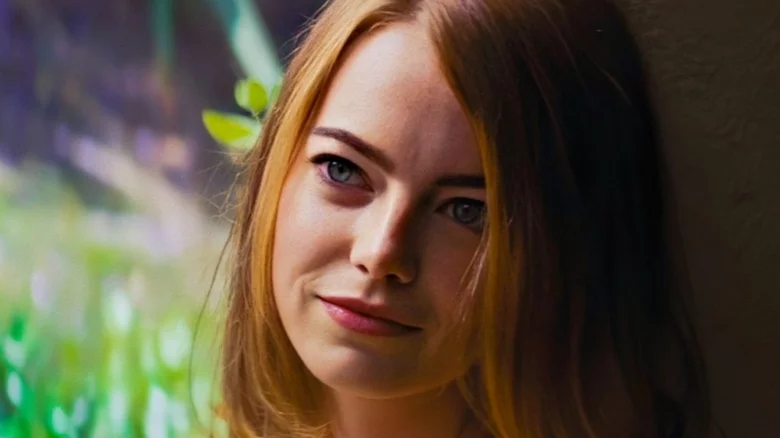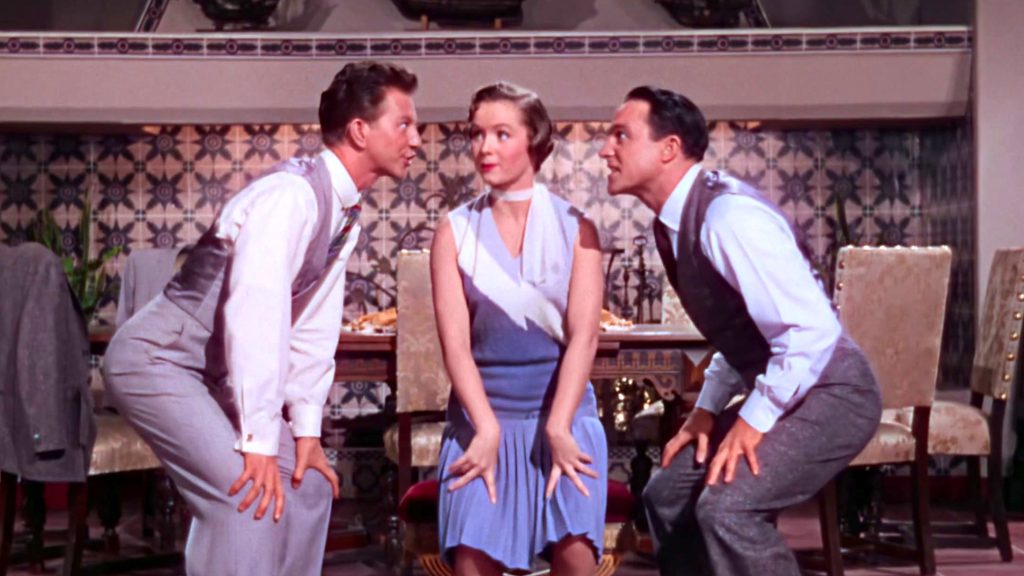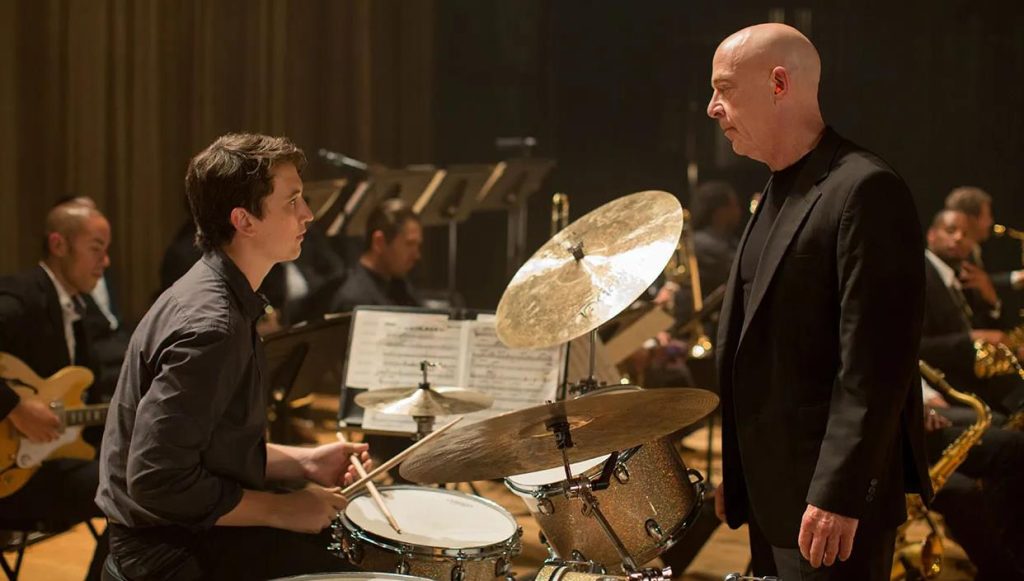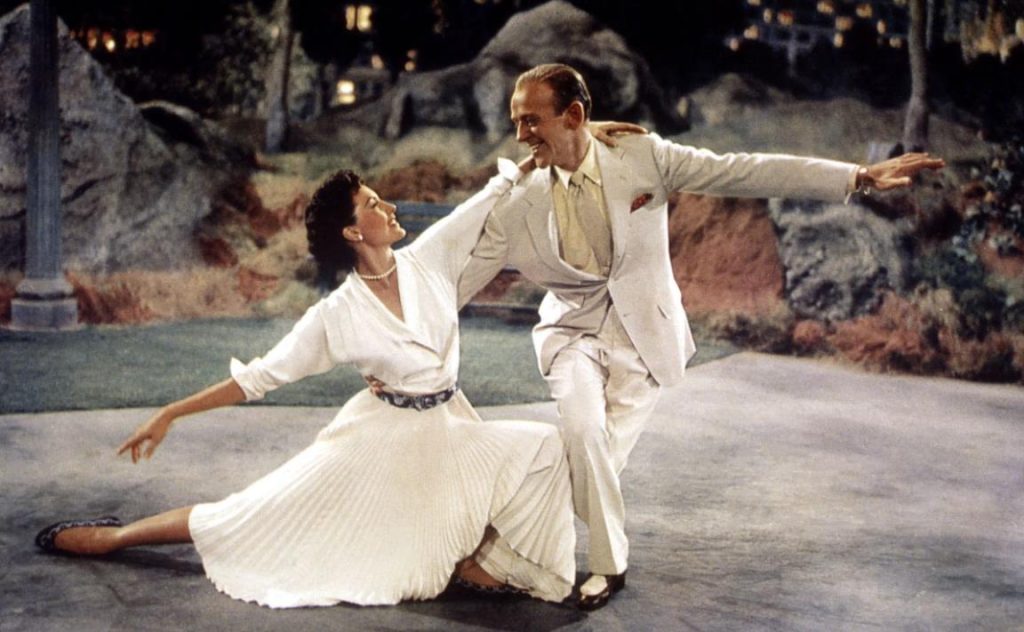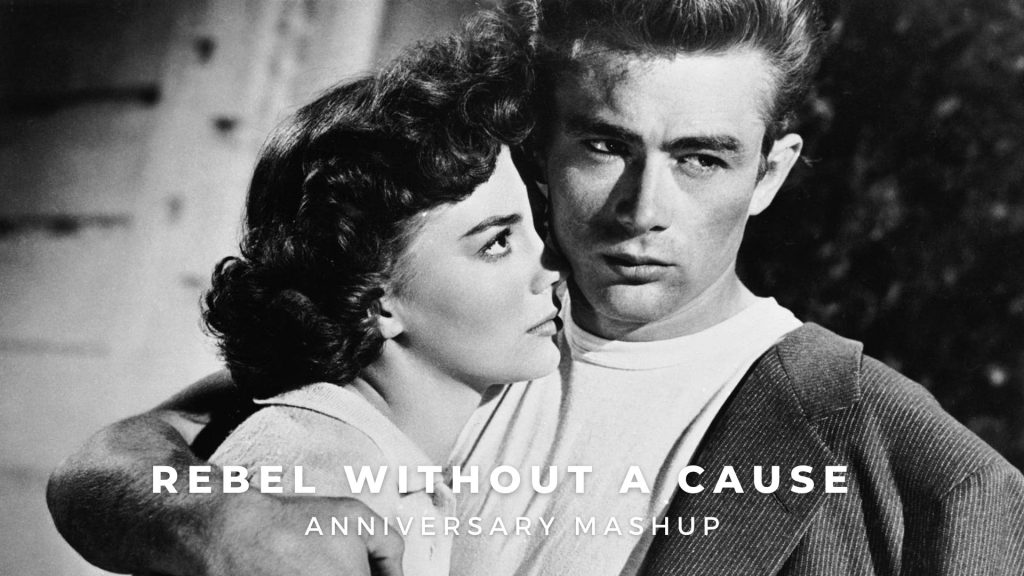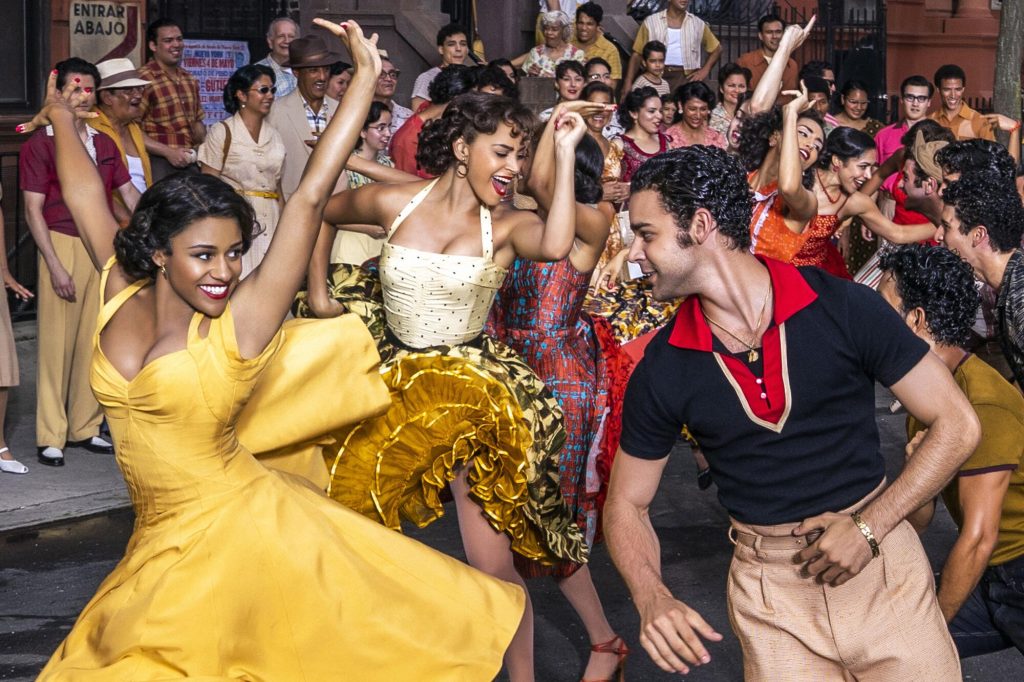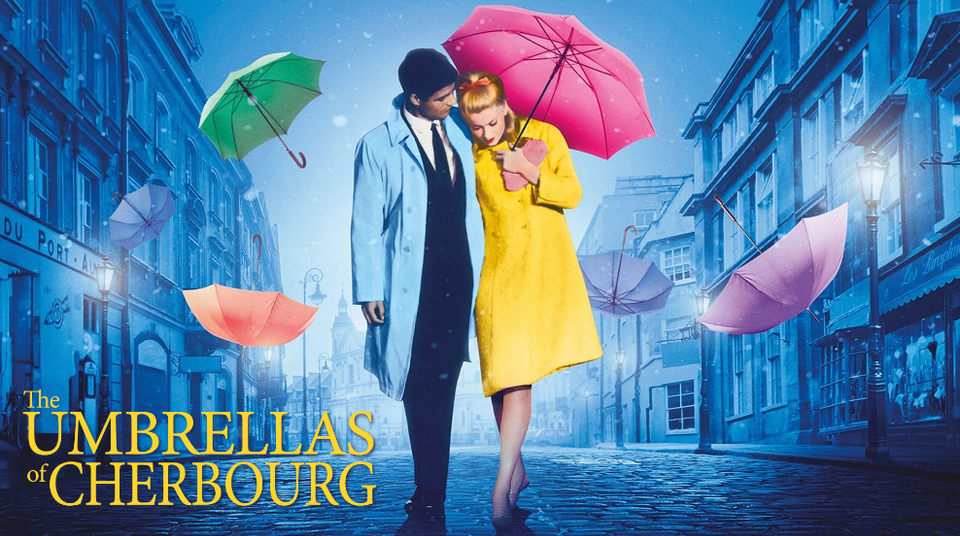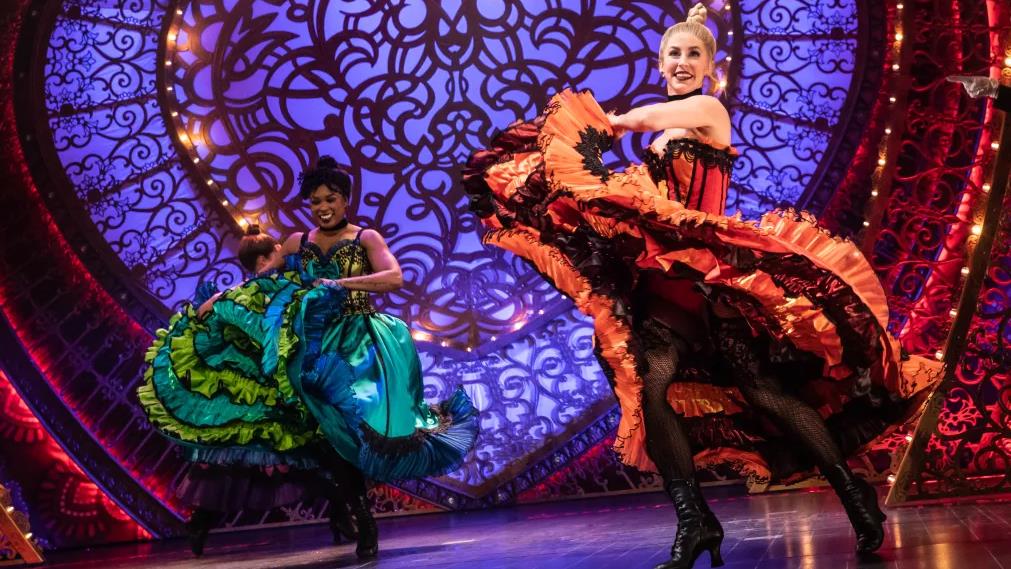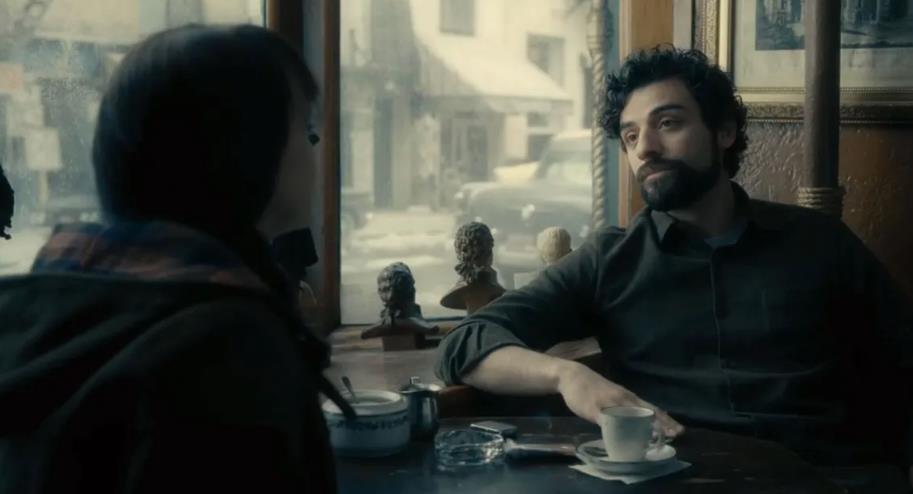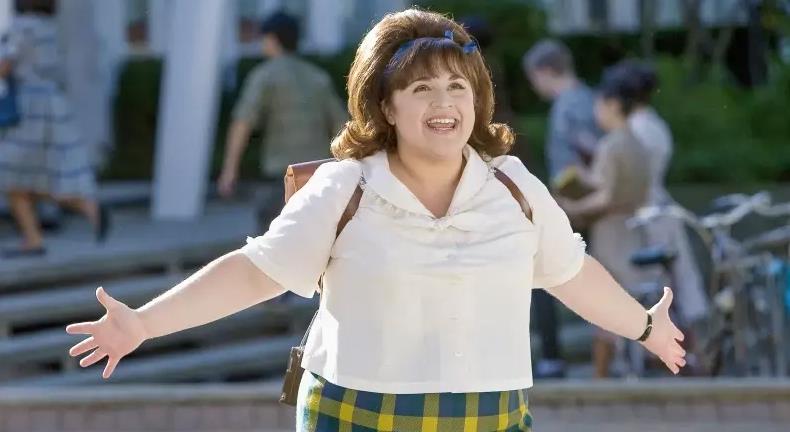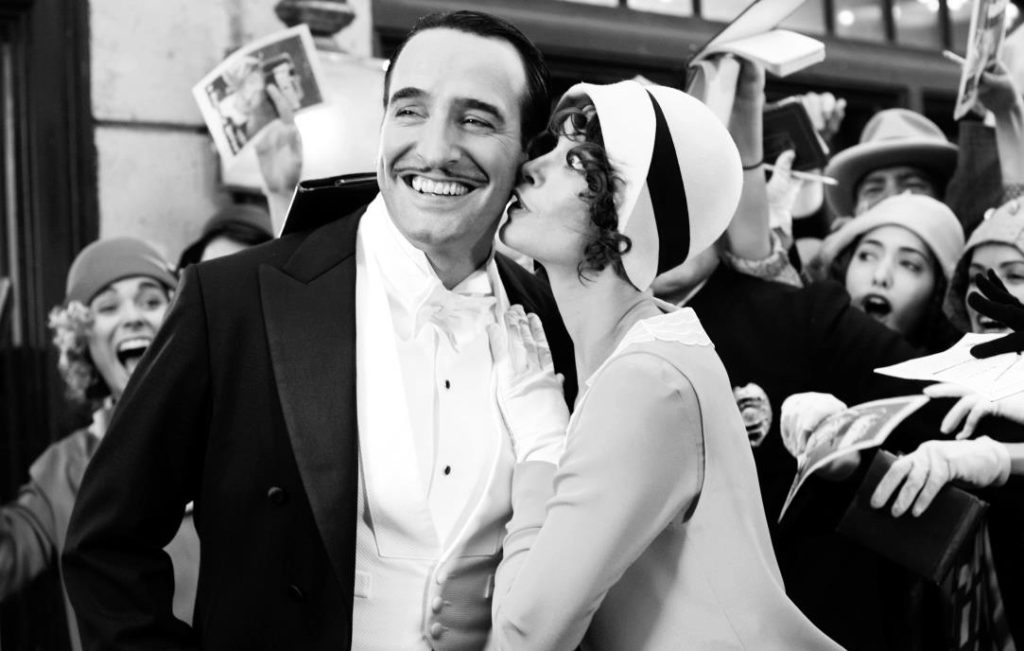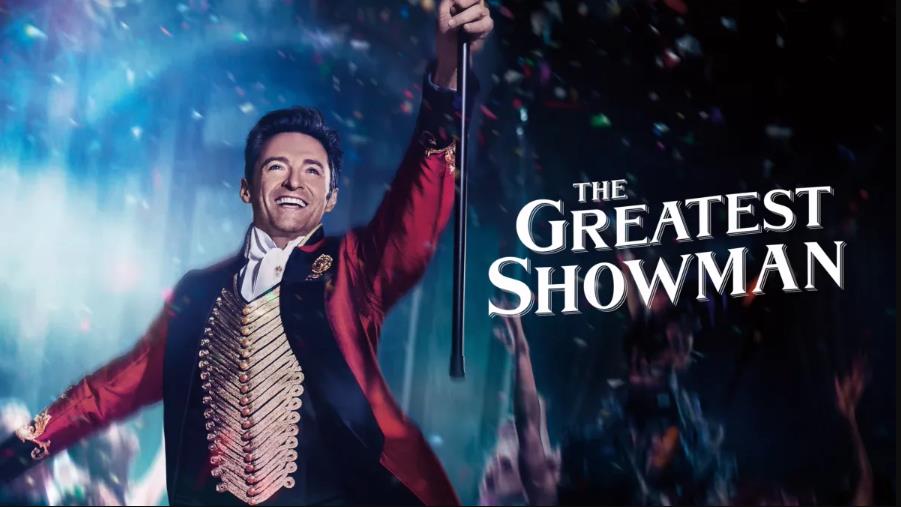12 Beloved Musical Movies like La La Land | Similar-List
Table Of Contents:
In 2016, Damien Chazelle's "La La Land" swept audiences with its captivating blend of music, romance, and visual splendor. Set against the backdrop of Los Angeles, the film follows Mia, an aspiring actress portrayed by Emma Stone, and Sebastian, a jazz pianist played by Ryan Gosling, as they navigate the pursuit of their dreams. At its heart, "La La Land" delves into the universal theme of chasing aspirations and finding fulfillment through artistic passion. Its unexpected success captivated audiences and revitalized the musical genre, leaving an indelible mark on contemporary cinema. If you are a fan of this captivating film and eager to find more similar musical movies to watch, here are 12 beloved movies like La La Land prepared for you.[1]
Singin' in the Rain[2]
"Singin' in the Rain," a beloved classic from 1952, holds a cherished place in the annals of cinema history, much like "La La Land" does in contemporary times. Directed by Stanley Donen and Gene Kelly, it captures the essence of Hollywood's Golden Age with its infectious energy, timeless charm, and groundbreaking musical sequences.
Both "Singin' in the Rain" and "La La Land" share a deep-rooted connection to the city of Los Angeles, serving as vibrant backdrops for their respective stories. While "Singin' in the Rain" explores the transition from silent films to "talkies" in the 1920s, "La La Land" paints a modern-day portrait of struggling artists pursuing their dreams in the City of Angels. Despite the temporal and narrative differences, both films celebrate the magic of Hollywood and the indomitable spirit of those who call it home.
Moreover, both films feature unforgettable musical numbers that have become iconic in their own right. In "Singin' in the Rain," Gene Kelly's exuberant dance in the rain is a moment of pure cinematic joy, while Debbie Reynolds' spirited performance of "Good Morning" showcases her infectious energy and talent. Similarly, "La La Land" boasts memorable sequences such as the lively opening number "Another Day of Sun" and the poignant ballad "Audition (The Fools Who Dream)," each contributing to the film's emotional depth and resonance.
Furthermore, both films explore themes of love, ambition, and the pursuit of stardom, albeit in different eras and contexts. In "Singin' in the Rain," the characters navigate the tumultuous waters of the film industry during a time of rapid change, while in "La La Land," Mia and Sebastian grapple with the challenges of making it in the modern entertainment landscape. Despite the passage of time, the universal themes explored in both films remain as relevant and relatable as ever, resonating with audiences across generations.
In essence, "Singin' in the Rain" and "La La Land" are kindred spirits bound together by their love of cinema, music, and the human experience. While separated by decades, these two films share a timeless quality that continues to captivate audiences and inspire filmmakers today. Through their dazzling performances, unforgettable songs, and enduring themes, both "Singin' in the Rain" and "La La Land" remind us of art's transformative power and the silver screen's enduring allure.
Whiplash
At first glance, "Whiplash" may seem like a departure from the whimsical romance of "La La Land." Yet, a closer examination reveals intriguing parallels between the two films, particularly in their exploration of artistic passion and the relentless pursuit of perfection.
Directed by Damien Chazelle, "Whiplash" delves into the cutthroat world of jazz music, where ambition clashes with obsession under the unforgiving tutelage of a demanding instructor, Terence Fletcher. The film's intense focus on the quest for greatness and the sacrifices required to achieve it mirrors the underlying themes present in "La La Land." While "Whiplash" immerses viewers in the gritty reality of a music conservatory, "La La Land" transports them to the dreamy landscapes of Los Angeles. Yet, both films ultimately confront the challenges and sacrifices inherent in pursuing artistic excellence.
In "Whiplash," Miles Teller's character, Andrew Neiman, embodies the relentless drive for perfection, willing to endure physical and emotional pain to become one of the greatest drummers of his generation. Similarly, Mia and Sebastian in "La La Land" grapple with their own aspirations and personal sacrifices in the pursuit of their dreams. The characters' unwavering commitment to their craft serves as a focal point in both films, driving the narrative forward and revealing the depths of their ambition and determination.
Furthermore, Damien Chazelle's directorial style shines through in both films, albeit in different contexts. In "Whiplash," Chazelle employs a fast-paced editing style and dynamic camera work to heighten the tension and intensity of the musical performances, immersing viewers in the visceral experience of the music. Similarly, in "La La Land," Chazelle utilizes vibrant colors, sweeping camerawork, and elaborate musical sequences to evoke the magic and romance of classic Hollywood musicals while infusing them with a modern sensibility.
Moreover, both films feature compelling character dynamics and intense musical sequences that captivate audiences and leave a lasting impression. In "Whiplash," the electrifying drumming sequences underscore the relentless pursuit of perfection, while in "La La Land," the intricate dance numbers and soulful musical performances convey the characters' emotions and aspirations with poignancy and grace.
While "Whiplash" and "La La Land" may occupy different genres and tones, they share a common thread in Damien Chazelle's exploration of the human spirit and the pursuit of artistic greatness. Through their compelling characters, intense performances, and masterful direction, both films offer a profound meditation on the sacrifices and triumphs that accompany pursuing one's dreams, resonating with audiences on a visceral and emotional level.
The Band Wagon
"The Band Wagon," a beloved classic musical from 1953, provides a fascinating parallel to the enchanting world of "La La Land," offering a behind-the-scenes glimpse into the drama and magic of Broadway theater. Directed by Vincente Minnelli and starring Fred Astaire and Cyd Charisse, "The Band Wagon" captures the essence of artistic collaboration and the highs and lows of show business, much like "La La Land" does for the realm of Hollywood.
In "The Band Wagon," viewers are transported into Broadway's glamorous yet tumultuous world, where egos clash, romances blossom, and dreams collide with reality. The film follows Tony Hunter, a washed-up movie star played by Fred Astaire, as he attempts to revive his career by starring in a Broadway musical. Along the way, he encounters a colorful cast of characters, including a temperamental director, a feisty leading lady, and a talented but eccentric composer, each adding complexity to the narrative.
Similarly, in "La La Land," audiences are immersed in the vibrant tapestry of Los Angeles, where aspiring actress Mia and jazz musician Sebastian navigate the challenges of pursuing their artistic dreams. Like Tony Hunter in "The Band Wagon," Mia and Sebastian face numerous setbacks and obstacles on their journey to success, including rejection, self-doubt, and the pressures of conformity. However, their unwavering passion and determination propel them forward, driving the narrative toward a captivating climax.
One of the most striking similarities between "The Band Wagon" and "La La Land" lies in their exploration of the creative process and the collaborative nature of artistic expression. In both films, viewers witness the challenges and triumphs of bringing a creative vision to life, from the initial spark of inspiration to the exhilarating realization of a shared dream. Whether it's staging a Broadway musical or creating a jazz club in Los Angeles, the characters in both films demonstrate the transformative power of art and the profound impact it can have on individuals and communities alike.
Moreover, "The Band Wagon" and "La La Land" share a common language of music and dance, with elaborate musical numbers and dazzling choreography that transport audiences to a world of pure imagination. From the exuberant energy of "That's Entertainment" to the romantic elegance of "Dancing in the Dark," "The Band Wagon" captivates viewers with its unforgettable songs and dynamic performances, much like the memorable musical sequences in "La La Land," such as the mesmerizing "Another Day of Sun" and the heartfelt "City of Stars."
In essence, "The Band Wagon" and "La La Land" are timeless reminders of art's transformative power and the performing arts's enduring allure. Both films celebrate the magic of creativity and the universal human desire to dream, inspire, and create something truly extraordinary through their captivating storytelling, vibrant characters, and enchanting musical numbers.
Rebel Without a Cause
"Rebel Without a Cause," a groundbreaking film of the 1950s directed by Nicholas Ray and starring James Dean, holds a profound connection to the narrative and themes of "La La Land." Despite their apparent differences in genre and era, both films share a deep exploration of identity, rebellion, and the search for meaning in a rapidly changing world.
Released in 1955, "Rebel Without a Cause" remains a cultural touchstone for its candid portrayal of teenage angst and disillusionment in post-war America. James Dean's portrayal of Jim Stark, a troubled teenager struggling to find his place in society, resonated with audiences and became an emblem of youthful rebellion. The film's iconic scenes, including the tense confrontation at the Griffith Observatory, the tragic knife fight in the abandoned mansion, and the poignant finale at the planetarium, have left an indelible mark on cinematic history.
In "La La Land," director Damien Chazelle pays homage to "Rebel Without a Cause" through subtle references and thematic parallels that underscore the film's exploration of identity and longing. Set against the backdrop of Los Angeles, both films capture the essence of a city in flux, where dreams collide with reality, and the pursuit of authenticity becomes a driving force for the characters.
One of the most notable connections between the two films lies in their use of shared locations, such as the Griffith Observatory, which serves as a symbolic landmark in both narratives. In "Rebel Without a Cause," the observatory becomes a sanctuary for Jim Stark and his fellow misfits, a place where they can escape the pressures of society and contemplate the mysteries of the universe. Similarly, in "La La Land," the observatory serves as a backdrop for the heartfelt "A Lovely Night" dance sequence, where Mia and Sebastian's burgeoning romance takes flight against the city's twinkling lights below.
Furthermore, both films explore alienation, disillusionment, and the desire for authenticity in a disconnected and disenchanted world. Whether it's Jim Stark's quest for acceptance and belonging or Mia and Sebastian's struggle to reconcile their artistic aspirations with the harsh realities of life, the characters in both films grapple with profound existential questions that resonate across generations.
Ultimately, "Rebel Without a Cause" and "La La Land" are timeless reflections of the human condition, reminding us of the universal desire to rebel against conformity, seek out our path, and find meaning in the chaos of existence. Through their rich storytelling, memorable characters, and evocative imagery, both films continue to captivate audiences and inspire contemplation on the nature of identity, love, and the pursuit of authenticity.
West Side Story
"West Side Story," a classic musical directed by Jerome Robbins and Robert Wise, draws striking parallels with "La La Land," particularly in its exploration of love, conflict, and cultural division amidst a vibrant cityscape. Released in 1961, "West Side Story" reimagines Shakespeare's "Romeo and Juliet" against New York City's West Side backdrop, where rival gangs, the Jets and the Sharks, vie for dominance.
One of the most evident similarities between "West Side Story" and "La La Land" lies in their shared thematic emphasis on the power of love to transcend social barriers and unite individuals from seemingly incompatible backgrounds. In "West Side Story," the forbidden romance between Tony, a former member of the Jets, and Maria, the sister of the Sharks' leader, defies the boundaries imposed by their warring communities. Similarly, in "La La Land," Mia and Sebastian's love story unfolds against Hollywood's competitive and often isolating environment, highlighting the transformative power of genuine connection and mutual support.
Furthermore, both films utilize music and dance as powerful narrative devices to express emotion, convey meaning, and propel the story forward. In "West Side Story," iconic songs such as "America," "Tonight," and "Somewhere" serve as emotional touchstones that articulate the characters' hopes, fears, and aspirations. Similarly, in "La La Land," musical numbers like "City of Stars," "Another Day of Sun," and "Audition (The Fools Who Dream)" enrich the storytelling experience, offering insights into the characters' innermost thoughts and desires.
Moreover, both films confront cultural conflict and social division issues, albeit in different contexts. In "West Side Story," the rivalry between the Jets, a predominantly white gang, and the Sharks, a Puerto Rican immigrant group, reflects the racial tensions and urban strife of 1950s America. Similarly, in "La La Land," themes of ambition, success, and the relentless pursuit of dreams intersect with broader societal issues, such as economic inequality, gender dynamics, and the commodification of art.
Additionally, both films feature dynamic choreography and visually stunning musical sequences that capture the energy and vibrancy of their respective settings. In "West Side Story," Jerome Robbins' electrifying dance numbers, characterized by sharp movements and intricate footwork, infuse the film with a sense of urgency and kinetic energy. Likewise, in "La La Land," choreographer Mandy Moore's choreography seamlessly integrates classic and contemporary dance styles, creating a visually arresting spectacle that transports audiences into the magical world of musical fantasy.
Ultimately, "West Side Story" and "La La Land" share a timeless appeal and enduring legacy as cinematic masterpieces that transcend their respective genres. Through their captivating storytelling, memorable characters, and evocative music, both films continue to captivate audiences across generations, offering profound insights into the complexities of love, identity, and the human experience.
The Umbrellas of Cherbourg
"The Umbrellas of Cherbourg," a French musical film directed by Jacques Demy and released in 1964, poignantly reflects on love, loss, and the passage of time, echoing the bittersweet tone and emotional depth found in "La La Land." Set in the quaint coastal town of Cherbourg, the film unfolds as a lyrical tale of romance and resilience, capturing the dreams and disappointments of its characters with a haunting sincerity.
One of the most distinctive features of "The Umbrellas of Cherbourg" is its innovative use of music, which permeates every aspect of the narrative, similar to the way music drives the storytelling in "La La Land." Unlike traditional musicals where characters burst into song spontaneously, "The Umbrellas of Cherbourg" employs a through-composed score, with every line of dialogue sung rather than spoken. This unique approach blurs the lines between dialogue and music, imbuing each moment with heightened emotion and lyrical beauty.
Furthermore, the visual aesthetics of "The Umbrellas of Cherbourg" are noteworthy for their vibrant color palette and stylized production design, reminiscent of the enchanting visual spectacle of "La La Land." From the pastel-hued storefronts lining the streets of Cherbourg to the exquisite costumes adorned by the characters, every frame of the film is meticulously crafted to evoke a sense of nostalgic charm and romantic allure. The vivid imagery serves as a backdrop for the characters' hopes and heartaches, enhancing the emotional resonance of their journey.
Moreover, "The Umbrellas of Cherbourg" explores themes of love and loss with a depth and poignancy that mirrors the narrative complexity of "La La Land." The central romance between Geneviève, a young umbrella shopkeeper, and Guy, a mechanic called to military service, unfolds against societal expectations and personal sacrifice. As they grapple with the challenges of separation and unforeseen circumstances, their love story takes on a universal quality, touching the hearts of audiences across cultures and generations.
Additionally, both films confront the passage of time and the inevitability of change, albeit in different ways. In "The Umbrellas of Cherbourg," the characters' lives unfold against the backdrop of shifting social norms and historical events, profoundly shaping their destinies. Similarly, in "La La Land," Mia and Sebastian navigate the complexities of modern-day Los Angeles, where dreams are nurtured and dashed amidst the ever-changing entertainment industry landscape.
Ultimately, "The Umbrellas of Cherbourg" and "La La Land" share a common reverence for the power of love, music, and storytelling to transcend the boundaries of time and space. Through their enchanting narratives, evocative visuals, and unforgettable music, both films leave an indelible impression on audiences, reminding us of the enduring beauty and complexity of the human experience.
Dreamgirls
"Dreamgirls," a dynamic musical drama directed by Bill Condon and released in 2006, provides a compelling contrast to the narrative and thematic elements of "La La Land" while also offering intriguing parallels that deepen our understanding of both films.
Set in the tumultuous world of the music industry during the 1960s and 1970s, "Dreamgirls" follows the journey of the Dreams, a female singing group navigating the highs and lows of fame, ambition, and personal identity. The film explores themes of success, betrayal, and the cost of artistic integrity, offering a gritty and soulful portrayal of the music business that starkly contrasts the romanticized portrayal of Hollywood in "La La Land."
One of the distinguishing features of "Dreamgirls" is its emphasis on the transformative power of music as a means of self-expression and empowerment. The characters in the film use their voices and talents to assert their identities and their place in the world, echoing the themes of artistic passion and self-discovery found in "La La Land." However, whereas "La La Land" focuses on the individual journey of Mia and Sebastian, "Dreamgirls" explores the collective struggles and triumphs of a musical ensemble, highlighting the importance of collaboration and camaraderie in pursuing success.
Furthermore, "Dreamgirls" delves into the complex dynamics of race, gender, and identity in the entertainment industry, shedding light on the systemic barriers and prejudices African-American artists faced during segregation and civil rights activism. The film's portrayal of the Dreams' rise to fame and the challenges they encounter offers a nuanced exploration of the intersectionality of race, class, and gender, adding layers of depth and complexity to its narrative.
Moreover, "Dreamgirls" is notable for its powerhouse performances and soulful musical numbers, which serve as the film's emotional backbone. From the electrifying energy of "And I Am Telling You I'm Not Going" to the infectious groove of "One Night Only," the songs in "Dreamgirls" capture the spirit and soul of the era, drawing audiences into the vibrant world of Motown-inspired rhythm and blues. In contrast, "La La Land" utilizes a more traditional approach to musical storytelling, with original songs that evoke the nostalgia of classic Hollywood musicals while infusing them with a contemporary sensibility.
Additionally, both films explore the tension between artistic ambition and personal integrity, albeit in different contexts. In "La La Land," Mia and Sebastian grapple with the pressures of commercial success and creative compromise as they pursue their dreams in the competitive entertainment world. In "Dreamgirls," the characters face similar challenges as they navigate the treacherous waters of the music industry, confronting issues of exploitation, betrayal, and self-determination along the way.
Ultimately, "Dreamgirls" and "La La Land" offer distinct yet complementary visions of the transformative power of music, love, and self-expression. While "Dreamgirls" delves into the gritty realities of the music business with its soulful performances and socially conscious narrative, "La La Land" enchants audiences with its whimsical romance and nostalgic homage to classic Hollywood musicals. Together, these films enrich our understanding of the complexities of the human experience, reminding us of the enduring resonance of music and storytelling in our lives.
Moulin Rouge!
"Moulin Rouge!" directed by Baz Luhrmann and released in 2001, offers a vibrant and audacious exploration of love, passion, and spectacle that resonates with the whimsical charm of "La La Land" while pushing the boundaries of traditional musical storytelling.
Set in the bohemian underworld of Paris at the turn of the 20th century, "Moulin Rouge!" unfolds against the backdrop of the iconic cabaret club, where artists, aristocrats, and performers converge in a kaleidoscope of color and sound. The film's stylized approach to storytelling, characterized by frenetic editing, anachronistic music, and elaborate production design, creates a heightened sense of theatricality that blurs the line between reality and fantasy.
Much like "La La Land," "Moulin Rouge!" embraces the power of music as a means of emotional expression and narrative propulsion. From the pulsating rhythms of contemporary pop hits to the lush orchestration of classical compositions, the film's eclectic soundtrack serves as a dynamic backdrop for the characters' emotional journey, infusing each scene with energy and intensity. Songs like "El Tango de Roxanne" and "Come What May" capture the raw passion and longing of the central romance, while ensemble numbers like "Lady Marmalade" and "The Show Must Go On" showcase the film's exuberant energy and theatrical flair.
Moreover, "Moulin Rouge!" shares thematic similarities with "La La Land" in its exploration of love, ambition, and sacrifice. Both films center around star-crossed lovers who must navigate the challenges of their respective worlds in pursuit of their dreams. In "Moulin Rouge!" Christian, a penniless writer played by Ewan McGregor, falls in love with Satine, a glamorous courtesan portrayed by Nicole Kidman, leading to a tumultuous romance fraught with deception and heartbreak. Similarly, Mia and Sebastian in "La La Land" must confront their insecurities and aspirations as they strive to succeed in Hollywood's competitive world.
Furthermore, both films challenge traditional narrative conventions through their innovative visual style and non-linear storytelling techniques. "Moulin Rouge!" employs rapid-fire editing, elaborate set designs, and surreal imagery to create a heightened reality that mirrors the feverish energy of its characters' emotions. In contrast, "La La Land" utilizes long takes, sweeping camera movements, and vibrant colors to evoke the dreamlike atmosphere of classic Hollywood musicals while grounding its story in the contemporary setting of Los Angeles.
Additionally, "Moulin Rouge!" and "La La Land" both celebrate the transformative power of art and the enduring allure of the creative spirit. In "Moulin Rouge!" the characters find solace and redemption in their artistic endeavors, using music, dance, and performance as a means of escape from the harsh realities of their lives. Similarly, Mia and Sebastian in "La La Land" discover a sense of purpose and fulfillment through their shared love of jazz music and the magic of the silver screen, transcending the limitations of their everyday existence to pursue their dreams.
In conclusion, "Moulin Rouge!" and "La La Land" stand as vibrant and captivating examples of the enduring appeal of the musical genre, each offering a unique vision of love, passion, and artistic expression. Through their innovative storytelling techniques, dynamic performances, and eclectic soundtracks, these films continue to captivate audiences with their timeless charm and universal themes, reminding us of the transformative power of music and storytelling.
Inside Llewyn Davis
"Inside Llewyn Davis," directed by Joel and Ethan Coen and released in 2013, provides a stark yet poignant contrast to the whimsical romance of "La La Land" by delving into the gritty realities of artistic struggle and personal turmoil.
Set against the backdrop of the 1960s folk music scene in Greenwich Village, New York City, "Inside Llewyn Davis" follows the eponymous protagonist, played by Oscar Isaac, as he navigates the highs and lows of his music career amidst personal setbacks and existential angst. Unlike the hopeful optimism of Mia and Sebastian in "La La Land," Llewyn Davis grapples with a sense of disillusionment and frustration as he struggles to find his place in the competitive world of folk music.
Thematically, "Inside Llewyn Davis" and "La La Land" both explore the complexities of the artistic journey, albeit from vastly different perspectives. While "La La Land" celebrates the transformative power of music and the pursuit of dreams, "Inside Llewyn Davis" offers a more introspective and somber meditation on the nature of success, failure, and the elusive quest for authenticity.
In "Inside Llewyn Davis," the titular character's journey is marked by personal and professional setbacks, including the death of his musical partner, conflicts with friends and collaborators, and a string of failed performances. Llewyn's struggles to reconcile his artistic ambitions with the harsh realities of the music industry mirror the challenges faced by Mia and Sebastian in "La La Land," albeit in a more somber and existential context.
Furthermore, both films explore the theme of artistic authenticity and the sacrifices required to pursue one's creative vision. In "La La Land," Mia and Sebastian must confront their own insecurities and compromises as they navigate the competitive world of Hollywood, ultimately discovering that true fulfillment lies in staying true to oneself. Similarly, Llewyn Davis in "Inside Llewyn Davis" grapples with questions of identity and integrity as he wrestles with the commercial pressures of the music industry and the expectations of his peers.
Visually, "Inside Llewyn Davis" adopts a muted color palette and naturalistic cinematography that contrasts sharply with the vibrant colors and stylized visuals of "La La Land." The Coen Brothers' trademark aesthetic, characterized by sparse dialogue, dark humor, and understated performances, lends the film a sense of gritty realism that underscores its exploration of personal struggle and artistic integrity.
In conclusion, "Inside Llewyn Davis" and "La La Land" offer compelling and contrasting portraits of the artistic journey, each imbued with its own unique perspective and thematic depth. Through their nuanced storytelling, rich characterizations, and evocative imagery, these films remind us of the complexities of the human experience and the enduring power of art to inspire, challenge, and provoke thought.
Hairspray
"Hairspray," directed by Adam Shankman and released in 2007, stands as a jubilant celebration of music, inclusivity, and social change, offering a vibrant contrast to the introspective charm of "La La Land."
Set in 1960s Baltimore against racial segregation and cultural upheaval, "Hairspray" follows the story of Tracy Turnblad, a plucky teenager with a passion for dancing who dreams of breaking barriers and making a difference. With its infectious energy, catchy tunes, and heartwarming message of acceptance, the film tackles themes of equality, diversity, and empowerment with unwavering optimism and infectious humor.
Unlike the romantic escapades of Mia and Sebastian in La La Land, Hairspray takes a more overtly political stance. Its narrative spotlights issues of racial injustice and discrimination. Through Tracy's journey from aspiring dancer to social activist, the film challenges societal norms and champions the power of individuality and unity in the face of adversity.
One of the most memorable aspects of "Hairspray" is its dynamic ensemble cast, which features powerhouse performances from the likes of Nikki Blonsky, John Travolta, Michelle Pfeiffer, and Queen Latifah. From energetic dance numbers to poignant musical solos, each actor brings their own unique flair to the screen, creating a tapestry of characters that reflect the diversity and vibrancy of 1960s Baltimore.
Thematically, "Hairspray" and "La La Land" both explore the transformative power of art and the pursuit of personal fulfillment, albeit through different narrative lenses. While "La La Land" focuses on its protagonists' romantic and artistic aspirations, "Hairspray" emphasizes the importance of social change and collective action in creating a more inclusive and equitable society.
Visually, "Hairspray" dazzles with its colorful costumes, lively choreography, and vibrant production design, capturing the spirit of 1960s Americana with a modern twist. From the bustling streets of Baltimore to the glittering stage of "The Corny Collins Show," the film immerses viewers in a world of music, dance, and social revolution, inviting them to join Tracy and her friends on their quest for justice and equality.
In conclusion, "Hairspray" serves as a spirited testament to the enduring power of music, activism, and community in effecting positive change. Through its infectious energy, memorable characters, and timeless message of acceptance and empowerment, the film inspires audiences of all ages to embrace their differences, stand up for what they believe in, and dance to the beat of their drum.
The Artist
"The Artist," directed by Michel Hazanavicius and released in 2011, offers a nostalgic homage to the silent film era and stands as a poignant contrast to the modern musical storytelling of "La La Land."
Set in Hollywood during the late 1920s and early 1930s, "The Artist" follows the story of George Valentin, a silent film star facing obsolescence with the advent of "talkies," and Peppy Miller, an up-and-coming actress whose star is on the rise. Through its innovative use of black-and-white cinematography and silent film techniques, the movie transports viewers to an era of glamour, romance, and cinematic magic.
One of the most striking aspects of "The Artist" is its commitment to authenticity, with Hazanavicius meticulously recreating the look and feel of classic silent cinema. From the expressive performances of its actors to the elaborate set designs and period costumes, every detail contributes to the film's immersive recreation of a bygone era. The absence of dialogue is compensated by powerful visual storytelling, with intricate facial expressions, gestures, and musical cues conveying a depth of emotion that transcends language.
Thematically, "The Artist" shares common ground with "La La Land" in exploring the highs and lows of artistic ambition and the pursuit of creative fulfillment. While "La La Land" celebrates the vibrancy and resilience of Hollywood's dreamers, "The Artist" offers a more introspective examination of the personal and professional sacrifices required to maintain one's artistic integrity in the face of industry trends and technological advancements.
Despite its silent format, "The Artist" resonates with contemporary audiences through its universal themes of love, loss, and redemption. The film's central romance between George and Peppy unfolds with timeless elegance and poignancy, capturing the hearts of viewers with its sincerity and emotional depth. Through their evolving relationship, the movie explores the transformative power of human connection and the enduring allure of silent cinema as an art form.
Visually, "The Artist" dazzles with its stunning cinematography and evocative imagery, drawing inspiration from the visual aesthetics of classic Hollywood films. From the dazzling dance sequences to the intimate moments of quiet reflection, every frame is imbued with nostalgia and longing, inviting viewers to experience the magic of cinema in its purest form.
In conclusion, "The Artist" is a testament to the enduring power of silent cinema and the timeless allure of storytelling through visual language. Through its captivating performances, meticulous craftsmanship, and heartfelt narrative, the film pays homage to a bygone era while reminding us of the enduring relevance of the human experience across generations. As audiences seek films that inspire and entertain, "The Artist" will continue to shine as a shining example of cinematic artistry and storytelling excellence.
The Greatest Showman
"The Greatest Showman," directed by Michael Gracey and released in 2017, shares thematic similarities with "La La Land" while offering a vibrant celebration of showmanship, spectacle, and self-discovery.
Inspired by the life of P.T. Barnum, "The Greatest Showman" transports viewers to the colorful and exhilarating world of the circus, where dreams take center stage and ordinary people defy expectations to become extraordinary performers. The film captures the essence of ambition, imagination, and the pursuit of greatness through its dynamic musical numbers and heartfelt storytelling.
At its core, "The Greatest Showman" celebrates the transformative power of imagination and the importance of embracing one's unique identity. Much like Mia and Sebastian in "La La Land," the characters in "The Greatest Showman" grapple with societal expectations and personal insecurities as they strive to carve out their paths to success and fulfillment.
One of the most compelling aspects of "The Greatest Showman" is its electrifying musical score, composed by Benj Pasek and Justin Paul. The score infuses the film with energy, emotion, and infectious enthusiasm. From the rousing anthem "This Is Me" to the soul-stirring ballad "Never Enough," each song propels the narrative forward and underscores the emotional journey of its characters.
Visually, "The Greatest Showman" dazzles with its lavish production design, vibrant costumes, and dynamic choreography, creating a feast for the eyes that captivates audiences from start to finish. The film's larger-than-life musical sequences, set against a bustling circus tent backdrop, evoke a sense of wonder and awe, inviting viewers to escape into a world of magic and possibility.
Thematically, "The Greatest Showman" explores timeless themes of acceptance, inclusion, and the power of unity in the face of adversity. Through the diverse ensemble cast and their shared commitment to creating a spectacle that celebrates individuality and diversity, the film delivers a powerful message of empowerment and resilience that resonates with audiences of all ages.
In conclusion, "The Greatest Showman" is a testament to musical cinema's enduring appeal and the universal desire for self-expression and acceptance. Through its exhilarating performances, captivating visuals, and uplifting message, the film inspires audiences to embrace their passions, celebrate their differences, and dare to dream of a brighter tomorrow. As a companion to "La La Land," "The Greatest Showman" enriches the cinematic landscape with its bold vision, infectious energy, and unwavering belief in the power of imagination to change the world.
In summary, "La La Land" serves as a testament to the enduring allure of music, romance, and artistic expression in cinema. By examining thematic parallels with other cinematic gems such as "Singin' in the Rain," "Whiplash," and "The Umbrellas of Cherbourg," we deepen our understanding of the rich tapestry of storytelling within the musical genre. As audiences continue to seek out films that inspire and entertain, the legacy of "La La Land" will continue to shine brightly, guiding future generations of filmmakers and dreamers toward new heights of creative exploration. Through its timeless themes and unforgettable moments, "La La Land" has left an indelible mark on contemporary cinema, reminding us of the transformative power of dreams and the enduring magic of the silver screen. As we reflect on its legacy, we are reminded that, like Mia and Sebastian's journey, the pursuit of artistic fulfillment is a timeless odyssey filled with hope, heartache, and, ultimately, the promise of discovery.
Movies Like La La Land
- 20 Movies Like Your Place or Mine to Keep the Romance Alive
- 20 Best Movies Like Joy to Watch Next
- 20 Movies Like Sing Street You May Like
- 20 Best Movies Like Lola You Must See
- Discover 20 Movies Like Fallen Angels to Stream
- 20 Best Movies Like Child's Play You Should Watch | Similar-List
- 20 Must-Watch Movies Like Moulin Rouge! | Similar-List
- 8 Best Movies Like Begin Again | Similar-List
- Discover 20 Movies Like Chicago to Stream | Similar-List
- 20 Best Movies Like The Greatest Showman | Similar-List
- 21 Best Movies Like Dear John You Must Watch | Similar-List
- 20 Heartwarming Movies Like The Sound of Music | Similar-List
- 20 Movies Like Footloose You Must Watch In 2024 | Similar-List
- 20 Best Movies Like Bohemian Rhapsody | Similar-List
- 20 Movies Like Midnight in Paris You May Like | Similar-List
- Top 20 Movies Like The Lucky One You Will Enjoy | Similar-List
- 20 Best Movies Like A Star is Born You Will Enjoy | Similar-List
- 20 Romantic and Warm Movies Like Amélie | Similar-List
- 10 Best Movies like 500 Days of Summer
- 19 Movies Like Dirty Dancing to Watch | Similar-List
Music,Romance Movies
- Top 15 Movies like 365 Days for Steamy Drama | Similar-List
- 22 Movies Like Call Me By Your Name | Similar-List
- Top 20 Movies Like Twilight to Watch in 2024 | Similar-List
- Discover 10 Rom-Com Movies Like How to Lose a Guy in 10 Days
- Romantic Movies Like Beautiful Disaster | Similar-List
- Racial Harmony Movies Like Green Book | Similar-List
- 18 Best Erotic Romance Movies Like 9 Songs
- Movies that Feel Like Fall: 20 Must-Watch Films | Similar-List
- 16 Movies like My Fault you must watch
- 10 Heartfelt Movies Like A Walk to Remember | Similar-List
- 16 Best Movies Like Juno
- 10 Best Movies like 500 Days of Summer
- Teen Comedy Movies Like The Girl Next Door | Similar-List
- Whimsical Picks: Movies Like Flipped | Similar-List
- Fresh Picks: 8 Movies Like Easy A | Similar-List
- Discover 10 Movies Like A Cinderella Story | Similar-List
- Discover Heartfelt Movies Like Me Before You | Similar-List
- Your Guide to Cinema: Movies Like Past Lives | Similar-List
- 5 Best Movies Like The Tearsmith you must watch
More Movies To Add To Your Queue
- 22 Movies Like Call Me By Your Name | Similar-List
- Timeless Romances: 10 Movies like About Time | Similar-List
- Top 20 Movies Like Twilight to Watch in 2024 | Similar-List
- 20 Thrilling Adventures Movies Like Hunger Games | Similar-List
- Discover 10 Rom-Com Movies Like How to Lose a Guy in 10 Days
- 15 Enchanting Movies Like Harry Potter | Similar-List
- Thrills Await: Explore Movies Like Us | Similar-List
- Top Picks: Action Movies like Bullet Train | Similar-List
- 12 Beloved Musical Movies like La La Land | Similar-List
- 15 Must-Watch Movies Like Ready Or Not | Similar-List
- 20 Movies Like Everything Everywhere All At Once | Similar-List
- Romantic Movies Like Beautiful Disaster | Similar-List
- Racial Harmony Movies Like Green Book | Similar-List
- 18 Best Erotic Romance Movies Like 9 Songs
- Discover Movies Like Wind River 2017 | Similar-List
- Apocalyptic Alternatives: 15 Movies like Greenland | Similar-List
- Movies that Feel Like Fall: 20 Must-Watch Films | Similar-List
- Movies Like Zero Dark Thirty: A Riveting Journey | Similar-List
- 21 Best Movies Like The Truman Show
- 16 Movies like My Fault you must watch
You May Also Like
- Top 20 Family Animated Movies Like Trolls | Similar-List
- 20 Best Movies Like The Pursuit of Happiness
- 21 Relaxing Comedy Movies Like The Mask | Similar-List
- 10 Best Movies Like The Breakfast Club
- Top 22 Movies Like A Christmas Story You Must Watch | Similar-List
- 20 Captivating Movies Like Joseph: King of Dreams | Similar-List
- 20 Engaging Movies Like Deliver Us from Eva
- 19 Best Movies Like A Hunting in Venice | Similar-List
- 20 Movies Like Real Steel That You Should See | Similar-List
- Discover 20 Movies Like The Piano Teacher
- 20 Movies Like Snatched You Will Enjoy | Similar-List
- 20 Must-Watch Movies Like Slumberland | Similar-List
- 20 Best Movies Like Parenthood
- 10 Best Movies Like The Lighthouse to Watch Now | Similar-List
- 20 Movies Like The Brothers
- 20 Must-Watch Movies Like Behind Enemy Lines | Similar-List
- 20 Thrilling Movies Like Look Away
- 20 Movies Like Tooth Fairy You Shouldn't Miss | Similar-List
- 20 Best Movies Like Speed Racer You Must See | Similar-List
- 20 Heartwarming Adventures Movies Like Short Circuit | Similar-List
